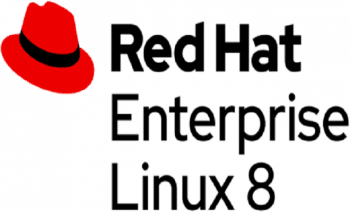Red Hat Enterprise Linux is poised to impact more than US$10 trillion in global business revenues in 2019, according to a Red Hat-sponsored IDC study.

Red Hat, the world’s leading provider of open source solutions, has announced the general availability of Red Hat Enterprise Linux 8, the operating system designed to span the breadth of deployments across enterprise IT.
For any workload running on any environment, Red Hat Enterprise Linux 8 delivers one enterprise Linux experience to meet the unique technology needs of evolving enterprises. From deploying new Linux workloads into production to launching digital transformation strategies, the next-generation enterprise is built on top of the world’s leading enterprise Linux platform.
According to the company, Red Hat Enterprise Linux 8 is the operating system redesigned for the hybrid cloud era and it is built to support the workloads and operations that stretch from enterprise datacenters to multiple public clouds.
Red Hat Enterprise Linux 8 is built to not just support enterprise IT in the hybrid cloud, but to help new technology strategies thrive.
Intelligent Linux for the hybrid cloud
As datacenters grow in scale and scope and workload complexity builds, the skills required to deploy and maintain Linux-based production systems become increasingly critical.
Thanks to the announcement of Red Hat Enterprise Linux 8, this intelligence and expertise is now built-in to Red Hat Enterprise Linux subscriptions by default with Red Hat Insights, delivering Red Hat’s Linux expertise as-a-service.
In addition, Red Hat Enterprise Linux 8 introduces Application Streams. Fast-moving languages, frameworks and developer tools are updated frequently in this stream without impacting the core resources that have made Red Hat Enterprise Linux an enterprise benchmark. This melds faster developer innovation with production stability in a single, enterprise-class operating system.
Paul Cormier, president, Products and Technologies, Red Hat, comments, “Over the past two decades, we’ve seen Linux grow from a niche operating system to a default for enterprise datacenters. Red Hat Enterprise Linux has been at the forefront of this evolution, supporting nearly every workload and enterprise IT environment that our partners and customers can conceive. Red Hat Enterprise Linux 8 continues this work but delivers more than just production-ready Linux; it provides a catalyst for innovation at cloud-scale. ”
Red Hat Enterprise Linux 8, the company says, is designed to lower the barrier to entry for Linux, enabling greater accessibility for Windows administrators, Linux beginners and new systems administrators without fear of the command line.
It abstracts away many of the deep complexities of granular sysadmin tasks behind the Red Hat Enterprise Linux web console.
Red Hat Enterprise Linux 8 also includes Red Hat Enterprise Linux System Roles, which automate many of the more complex tasks around managing and configuring Linux in production.
To enhance security, Red Hat Enterprise Linux 8 supports the OpenSSL 1.1.1 and TLS 1.3 cryptographic standards.
Red Hat’s hybrid cloud portfolio
Red Hat Enterprise Linux 8 forms the foundation for Red Hat’s entire hybrid cloud portfolio, starting with Red Hat OpenShift Container Platform 4 and the upcoming Red Hat OpenStack Platform 15.
The forthcoming Red Hat Enterprise Linux CoreOS, a minimal footprint operating system designed to host Red Hat OpenShift Container Platform deployments, is also built on Red Hat Enterprise Linux 8.
Red Hat Enterprise Linux 8 is also broadly supported as a guest operating system on Red Hat hybrid cloud infrastructure, including Red Hat OpenShift 4, Red Hat OpenStack Platform 15 and Red Hat Virtualization 4.3.
Along with the launch of Red Hat Enterprise Linux 8, the company also announced the general availability of the Red Hat Universal Base Image, a userspace image derived from Red Hat Enterprise Linux for building Red Hat certified Linux containers.
The Red Hat Universal Base Image is available to all developers with or without a Red Hat Enterprise Linux subscription, providing a more secure and reliable foundation for building enterprise-ready containerized applications.











































































